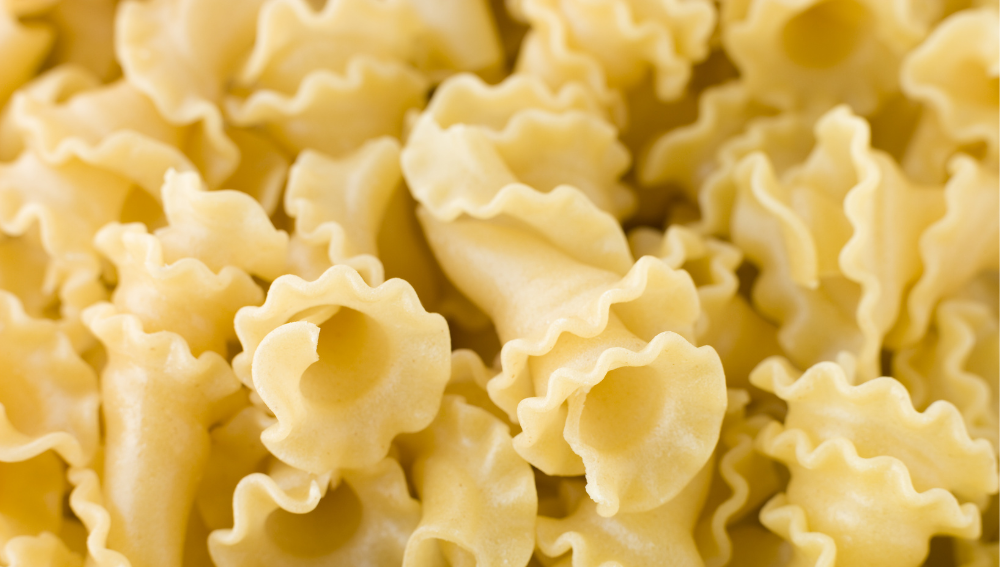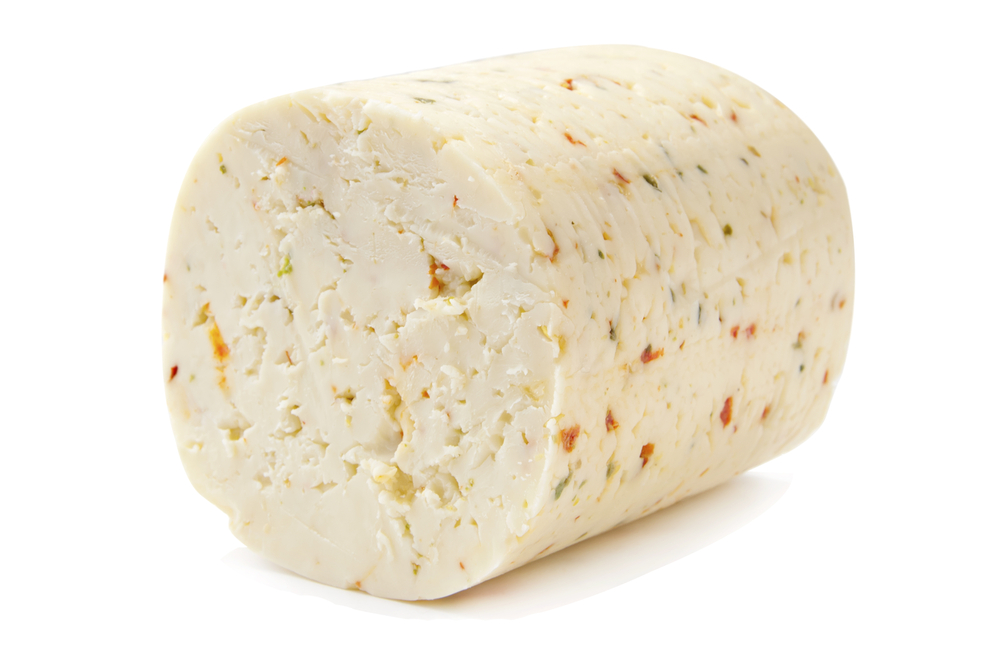I am often asked, “What does feta cheese taste like?” Feta cheese is a Greek-based curd cheese made from goat and sheep milk.
It has a tangy, salty flavor with a creamy texture that crumbles easily. The cheese is often used in salads, sandwiches, and as a topping for pizzas and pasta dishes.
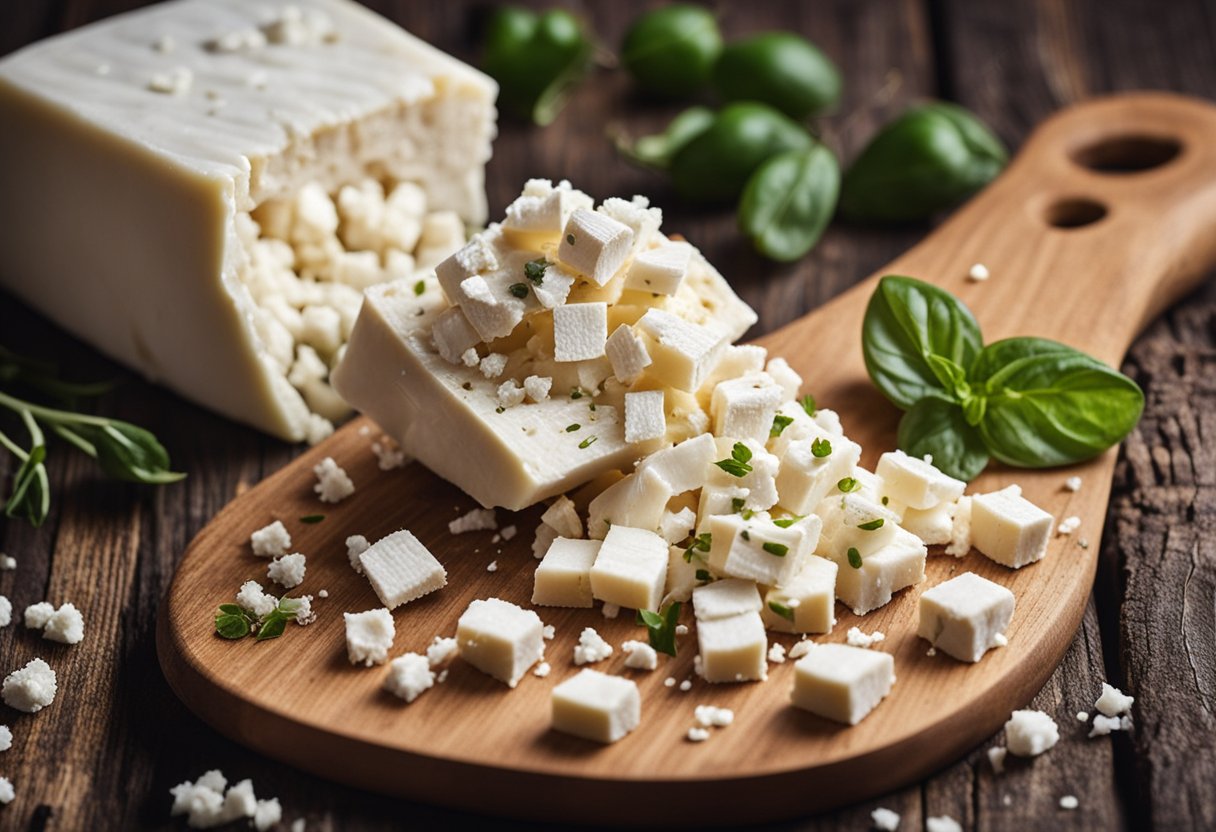
When it comes to feta cheese, the taste profile can vary depending on the origin and the type of milk used. Greek feta cheese is known for its sharp, tangy flavor, while Bulgarian feta cheese is milder and creamier.
French feta cheese is softer and less salty than its Greek counterpart. The texture of feta cheese is crumbly and moist, and it has a slightly grainy texture.
Key Takeaways
- Feta cheese has a tangy, salty flavor with a creamy texture that crumbles easily.
- The taste profile can vary depending on the origin and the type of milk used.
- Feta cheese is often used in salads, sandwiches, and as a topping for pizzas and pasta dishes.
Origins of Feta Cheese
Feta cheese is one of the most popular types of cheese in the world, and it has a long and interesting history.
As a cheese lover, I am always curious about the origin and history of different types of cheese, and feta cheese is no exception. Here is what I have learned about the origins of feta cheese.
Feta cheese has its roots in Greece, where it has been made for thousands of years. In fact, feta cheese is considered to be one of the oldest cheeses in the world.
The name “feta” comes from the Greek word “fetta,” which means “slice.” This name is fitting because feta cheese is often sliced and served in thin slices.
Traditionally, feta cheese is made from sheep’s milk or a combination of sheep’s and goat’s milk. The cheese is then aged in brine, which gives it its characteristic salty taste.
Feta cheese is also known for its crumbly texture, which makes it a popular ingredient in salads and other dishes.
In Greece, feta cheese is so important that it has been granted Protected Designation of Origin (PDO) status by the European Union.
This means that only cheese made in certain areas of Greece using traditional methods can be called “Greek feta.” The PDO designation is meant to protect the quality and authenticity of the cheese.
Overall, the history and tradition of feta cheese are fascinating, and it is clear why this cheese has become so popular around the world.
Taste Profile of Feta Cheese
Feta cheese is known for its distinctive taste and texture. As someone who has tasted feta cheese, I can confidently say that it has a salty, tangy, and slightly sour taste. It also has a creamy texture that crumbles easily.
The salty taste of feta cheese comes from the brine solution used to preserve it. The brine solution is made up of water, salt, and sometimes vinegar. This solution not only helps to preserve the cheese, but it also gives it its characteristic salty taste.
Feta cheese is also known for its rich and tangy flavor. The tangy taste comes from the lactic acid produced during the fermentation process. This gives the cheese a slightly sour taste, which is balanced out by the saltiness.
There are different types of feta cheese, each with its own unique taste profile. Greek feta cheese, for example, is known for its sharp and tangy taste. French feta cheese, on the other hand, is milder and creamier in taste.
Some people also describe the taste of feta cheese as being slightly sweet and lemony. This is because the cheese contains citric acid, which gives it a slightly acidic taste. The sweetness comes from the lactose present in the cheese.
Overall, feta cheese has a complex and flavorful taste profile that is both salty and tangy. It is a versatile cheese that can be used in a variety of dishes, from salads to pasta to sandwiches.
Whether you like it mild or sharp, feta cheese is sure to add a unique flavor to your dishes.
Texture of Feta Cheese
Feta cheese has a unique texture that sets it apart from other types of cheese. It is a soft, crumbly cheese that has a creamy texture. When you bite into it, you can feel the crumbly texture, but it also feels smooth and creamy on your tongue.
The texture of feta cheese is influenced by its fat content. Feta cheese is made from sheep’s milk or a combination of sheep’s and goat’s milk.
The fat content in sheep’s milk is higher than goat’s milk, which contributes to the creamy texture of feta cheese.
Feta cheese is stored in brine, which helps to preserve its texture and flavor. The brine also adds a salty taste to the cheese.
When you remove feta cheese from the brine, it may be a little wet, but it will dry out and become crumbly when you cut it.
The curd of feta cheese is cut into small pieces, which contributes to its crumbly texture. The cheese is then packed into molds and allowed to drain, which further enhances its crumbly texture. During the aging process, feta cheese develops small holes, which add to its unique texture.
Overall, the texture of feta cheese is creamy, crumbly, and has small holes. It is a cheese that is easy to crumble and sprinkle over salads or pasta dishes. Its creamy texture makes it a great cheese to spread on crackers or bread.
Nutritional Value of Feta Cheese
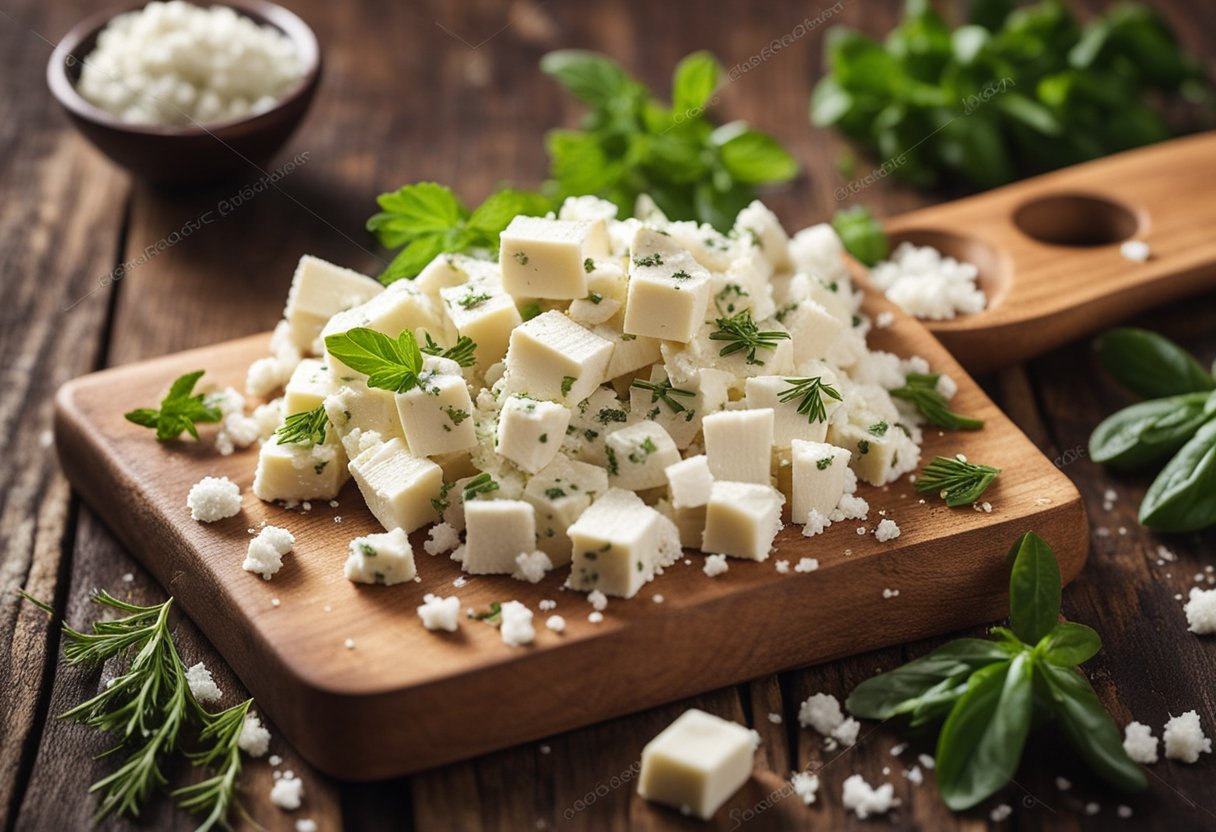
As a cheese lover, I always wonder about the nutritional value of the cheese I consume. Feta cheese is no exception.
This soft, crumbly cheese has a unique taste that pairs well with salads, sandwiches, and other dishes. So, let’s take a closer look at the nutritional value of feta cheese.
Calories
One of the most important things to consider when consuming feta cheese is its calorie content. According to Verywell Fit, one ounce (28 grams) of feta cheese contains about 74 calories.
This means that consuming feta cheese in moderation can be a healthier option than other high-calorie cheeses.
Protein
Feta cheese is a good source of protein. According to WebMD, one ounce (28 grams) of feta cheese contains about 4 grams of protein. Protein is essential for building and repairing tissues in our body.
Calcium
Feta cheese is also a good source of calcium. Calcium is essential for maintaining strong bones and teeth. According to Nutrition Advance, one ounce (28 grams) of feta cheese contains about 140 milligrams of calcium.
Sodium
It’s important to note that feta cheese is high in sodium. According to Healthline, one ounce (28 grams) of feta cheese contains about 315 milligrams of sodium.
Consuming too much sodium can lead to high blood pressure and other health problems.
Other Nutrients
Feta cheese also contains other important nutrients like phosphorus and vitamins A and B. Phosphorus is essential for maintaining strong bones and teeth, while vitamins A and B are important for maintaining overall health.
In conclusion, feta cheese is a good source of protein and calcium, but it’s important to consume it in moderation due to its high sodium content.
Health Benefits of Feta Cheese
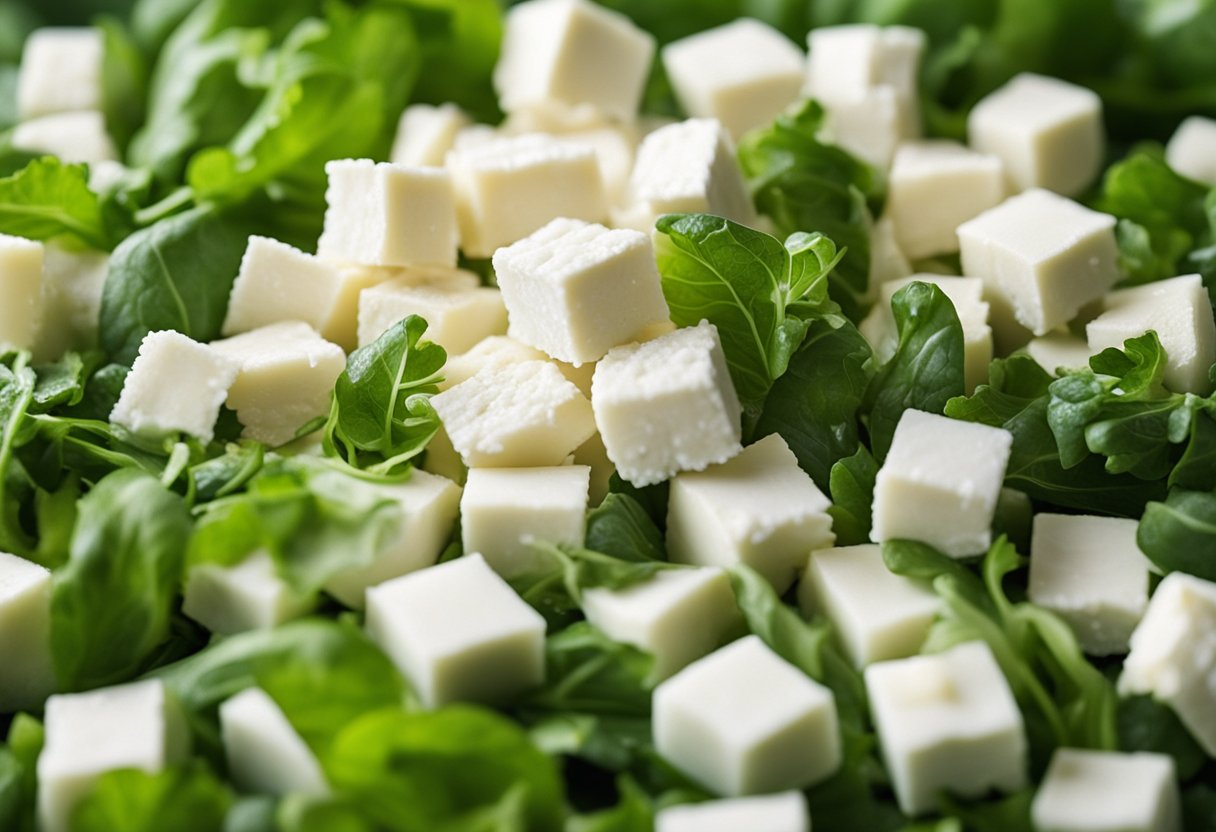
As a cheese lover, I am always interested in the health benefits of the cheese I consume. Feta cheese, a popular Greek cheese, is not only delicious but also has several health benefits.
Rich in Nutrients
Feta cheese is a good source of nutrients such as calcium, phosphorus, and protein. These nutrients are essential for maintaining healthy bones and teeth.
Additionally, feta cheese is low in calories and fat, making it a good option for those who want to lose weight or maintain a healthy weight.
Supports Immune System
Feta cheese contains probiotics, which are beneficial bacteria that help to support a healthy immune system. Probiotics also aid in digestion and can help to prevent certain infections.
Good for Pregnant Women
Pregnant women need to consume enough calcium to support their growing baby’s bones. Feta cheese is an excellent source of calcium, making it a good option for pregnant women.
However, pregnant women should ensure that the cheese they consume is made from pasteurized milk to avoid the risk of listeria infection.
May Help Prevent Osteoporosis
Osteoporosis is a common condition that affects many people, especially women. Feta cheese is rich in calcium and phosphorus, which are essential for maintaining healthy bones. Consuming feta cheese regularly may help to prevent osteoporosis.
May Help Prevent Cancer
Feta cheese contains antioxidants, which can help to prevent cell damage and reduce the risk of certain types of cancer. Additionally, feta cheese is low in sodium, which has been linked to an increased risk of some cancers.
In summary, feta cheese is not only delicious but also has several health benefits. It is a good source of nutrients, supports the immune system, is good for pregnant women, may help prevent osteoporosis, and may help prevent cancer.
Feta Cheese Varieties
As a cheese lover, I have tasted various types of feta cheese. Feta cheese is a type of curd cheese that originated in Greece. It is made from a combination of sheep milk and goat milk, with a saltwater solution used to preserve the cheese.
There are different varieties of feta cheese, each with a unique taste and texture. Here are some of the most common feta cheese varieties:
- Greek Feta: This is the most popular type of feta cheese. It is made from sheep’s milk, although sometimes a little goat’s milk is blended in. Greek feta is salty and tangy, with a lemony flavor. It is usually rich and creamy, although versions with more goat’s milk tend to be more crumbly. Greek feta is perfect for salads, sandwiches, and as a topping for pizza.
- Bulgarian Feta: Bulgarian feta is made from sheep milk and has a milder taste than Greek feta. It is less salty and has a creamier texture. Bulgarian feta is a great choice for cooking, as it melts easily and adds a creamy flavor to dishes.
- French Feta: This variety of feta cheese is less briny than its peers and tends to be a bit softer. It is mild and creamy and is great whipped in a blender. French feta is perfect for dips and spreads.
- Israeli Feta: Israeli feta is made from goat milk and has a tangy and slightly salty taste. It is crumbly and has a dry texture. Israeli feta is a great substitute for Greek feta in salads and sandwiches.
Feta cheese is also available in blocks or crumbled. The label on the package will indicate the type of milk used to make the cheese.
When buying feta cheese, make sure to check the label to ensure that it contains at least 70% sheep milk and 30% goat milk.
If you are looking for feta cheese substitutes, there are several options available. Goat cheese is a great substitute for feta cheese, as it has a similar tangy flavor. Other substitutes include queso fresco, ricotta salata, and halloumi cheese.
Overall, feta cheese is a versatile and delicious cheese that can be used in a variety of dishes. Whether you prefer Greek, Bulgarian, French, or Israeli feta, there is a variety of feta cheese that will suit your taste buds.
How to Store Feta Cheese
As a cheese lover, I know how important it is to store feta cheese properly to keep it fresh for longer. Improper storage can lead to spoilage and a change in the flavor of the cheese. Here are some tips on how to store feta cheese:
Store in Brine
Feta cheese is typically sold in brine, which is a solution of water and salt. The brine helps to keep the cheese moist and flavorful. When storing feta cheese, it is important to keep it in the brine to maintain its texture and flavor.
If the feta cheese you have picked up is already super salty, simply storing it in plain water will help keep its crumbly texture and tangy flavor.
Temperature
Feta cheese should be stored in the refrigerator at a temperature between 35°F and 40°F (1.7°C and 4.4°C). It is important to keep the cheese at a consistent temperature to prevent spoilage.
When storing feta cheese, it is important to keep it away from foods with strong odors, as it can absorb these odors and flavors.
Unopened Feta Cheese
If you have unopened feta cheese, you can store it in the refrigerator for up to three months. Keep the cheese in its original packaging, or wrap it tightly in plastic wrap to prevent air from getting in and causing spoilage.
Opened Feta Cheese
Once you have opened the feta cheese, it should be consumed within 3-4 days. To store opened feta cheese, place it in a sealed container with its brine, and keep it in the refrigerator.
You can also make your own brine by mixing water and salt. The brine will help to keep the cheese moist and flavorful.
Freezing Feta Cheese
If you have leftover feta cheese that you won’t be able to consume within the recommended timeframe, you can freeze it.
Wrap the cheese tightly in plastic wrap, or place it in an airtight container, and store it in the freezer for up to six months. When you’re ready to use the cheese, thaw it in the refrigerator overnight.
In conclusion, storing feta cheese properly is essential to maintain its texture and flavor.
Keep it in brine, at the right temperature, and consume it within the recommended timeframe. With these tips, you can enjoy your feta cheese for longer and avoid spoilage.
Culinary Uses of Feta Cheese
As a versatile cheese, feta can be used in a variety of culinary applications. Here are some ways to incorporate feta cheese into your dishes:
Salads
Feta cheese is a popular addition to salads. It pairs well with greens, fruits, and vegetables. Try adding feta to a spinach salad with strawberries and balsamic vinaigrette, or to a Greek salad with tomatoes, cucumbers, and olives.
Pizza
Feta cheese can be used as a substitute for mozzarella on pizza. It pairs well with tomatoes, olives, and olive oil. Try adding feta to a Mediterranean-style pizza with artichokes and roasted red peppers.
Sandwiches
Feta cheese can be used as a spread on sandwiches. It pairs well with bread, tomatoes, and cucumber. Try adding feta to a pita sandwich with grilled chicken and tzatziki sauce.
Pasta
Feta cheese can be used in pasta dishes. It pairs well with tomato sauce, spinach, and olives. Try adding feta to a pasta salad with cherry tomatoes and basil.
Desserts
Feta cheese can be used in desserts. It pairs well with fruit and honey. Try adding feta to a fruit salad with watermelon and mint, or to a cheesecake with a honey drizzle.
Side Dish
Feta cheese can be used as a side dish. It pairs well with roasted vegetables and bread. Try adding feta to roasted brussels sprouts with a balsamic glaze, or to a bruschetta with tomatoes and basil.
Overall, feta cheese is a versatile ingredient that can be used in a variety of dishes. Its tangy and salty flavor can enhance the taste of many different foods.
Pairing Feta Cheese with Other Foods
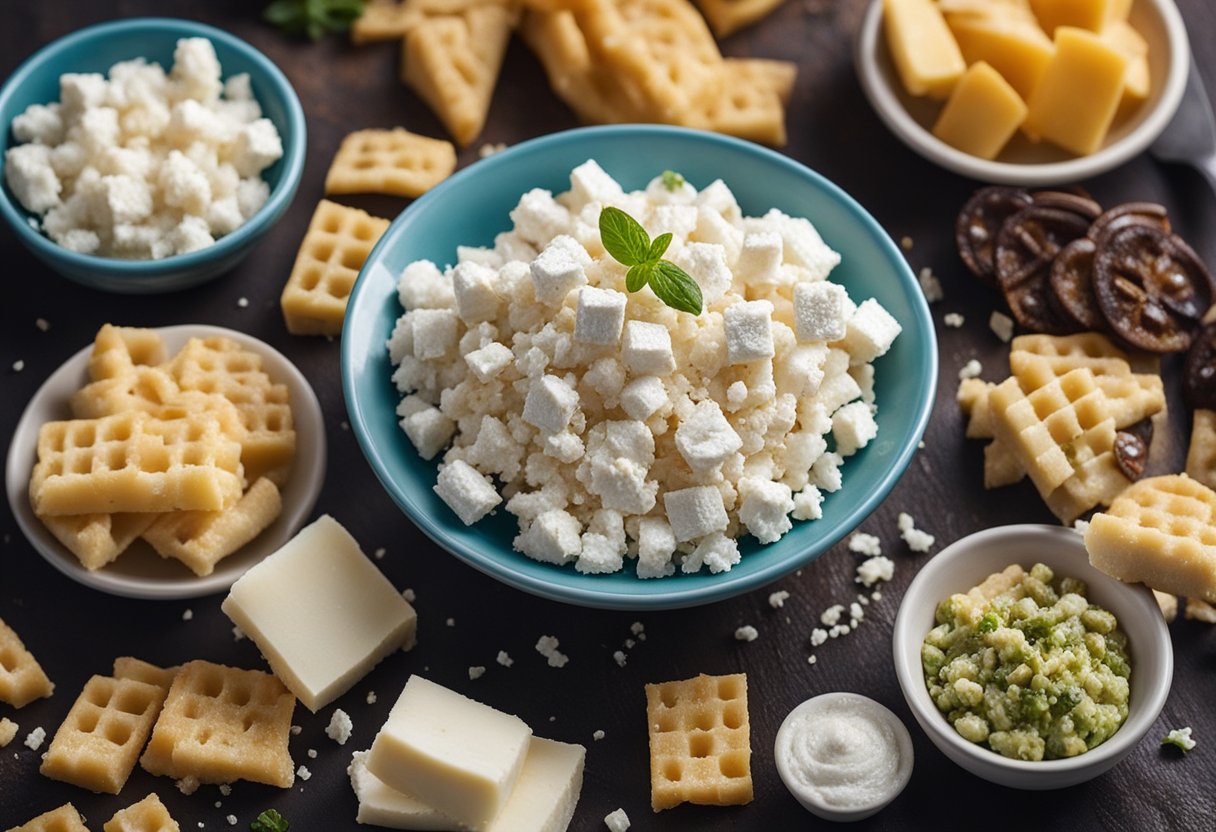
As a versatile cheese, Feta can be paired with a wide range of foods. Here are some of my favorite pairings:
Salads
Feta cheese is a staple in Greek salads, but it can also be added to other types of salads to add a tangy and salty flavor.
I like to pair Feta with spinach, arugula, or mixed greens. For a sweet and savory combination, try adding sliced strawberries or watermelon to your salad.
Tomatoes
Feta cheese and tomatoes are a classic pairing. The acidity of the tomatoes complements the salty and tangy flavor of the cheese.
You can simply sprinkle crumbled Feta cheese on top of sliced tomatoes, or try making a tomato and Feta cheese salad with olive oil and fresh herbs.
Bread
Feta cheese can be enjoyed on its own, but it also pairs well with crusty bread. Spread some butter on a slice of bread and top it with crumbled Feta cheese for a quick and easy snack. You can also make a Feta cheese and olive tapenade to spread on bread.
Vegetables
Feta cheese can be used to add flavor to a variety of vegetables. Try adding crumbled Feta to roasted or grilled vegetables like zucchini, eggplant, or bell peppers. You can also stuff mushrooms with Feta cheese for a delicious appetizer.
Fruits
Feta cheese pairs surprisingly well with fruits like watermelon, strawberries, and grapes. The salty and tangy flavor of the cheese complements the sweetness of the fruit. Try making a fruit salad with Feta cheese and a honey and balsamic dressing.
Olive Oil
Feta cheese and olive oil are a match made in heaven. Drizzle some olive oil on top of crumbled Feta cheese for a simple and delicious appetizer. You can also use Feta cheese to make a creamy olive oil dip for bread or vegetables.
Overall, Feta cheese is a versatile ingredient that can be paired with a wide range of foods. Its tangy and salty flavor adds a unique twist to any dish.
Feta Cheese in Different Cultures
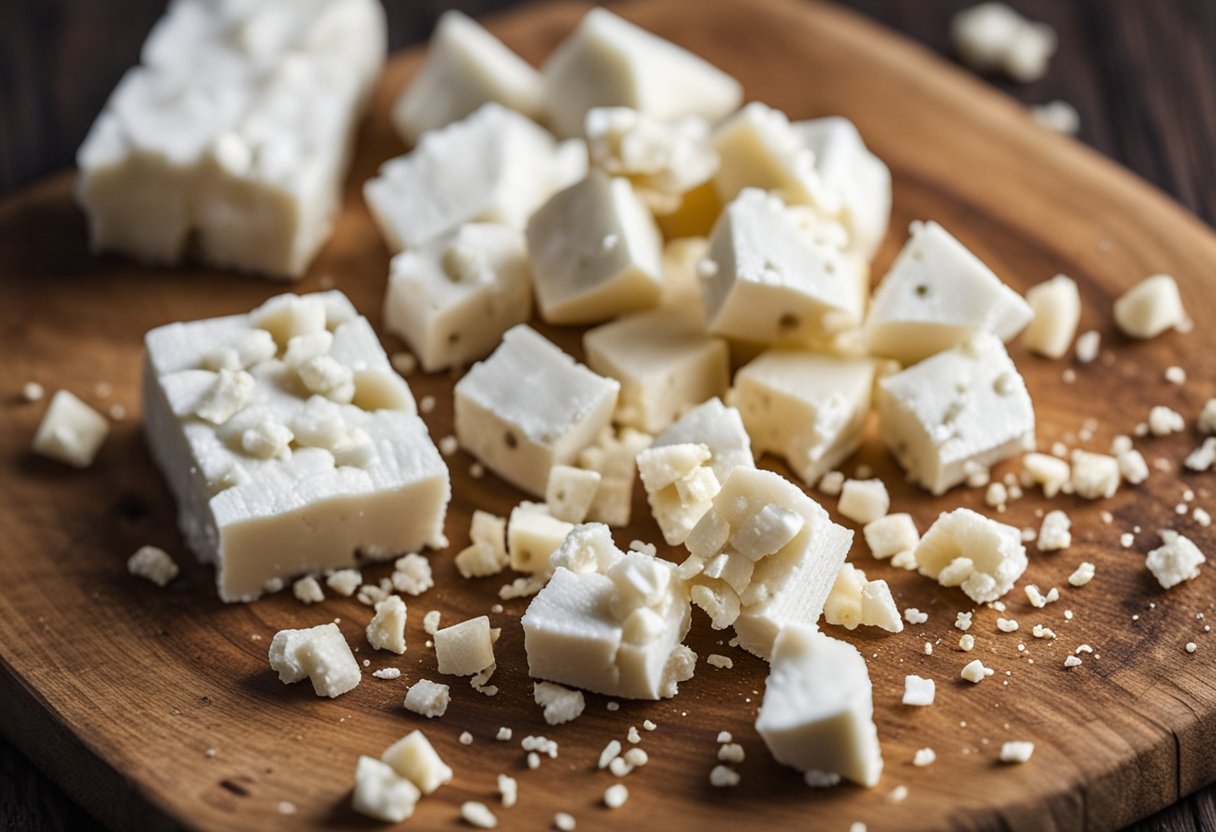
Feta cheese is a popular cheese that is consumed in many cultures around the world. Each culture has its own way of making feta cheese, which can affect the taste and texture of the cheese.
In Israel, feta cheese is known as “shamenet” and is made from sheep’s milk. The cheese has a tangy and salty taste, which makes it a popular ingredient in many dishes. It is often used in salads, sandwiches, and as a topping for pizza.
In the United States, feta cheese is made from cow’s milk, which gives it a milder taste compared to the traditional Greek feta cheese. The texture of American feta cheese is also different, as it is often creamier and less crumbly than Greek feta cheese.
Despite these differences, American feta cheese is still a popular ingredient in many dishes, such as salads, omelets, and pasta dishes.
Aged feta cheese is a type of feta cheese that has been aged for a longer period of time, which gives it a sharper and more pungent taste.
Aged feta cheese is often used as a seasoning or topping for dishes, as it can add a strong flavor to the dish. Aged feta cheese is also a popular ingredient in dips, spreads, and sauces.
In conclusion, feta cheese is a versatile cheese that is consumed in many cultures around the world. The taste and texture of feta cheese can vary depending on the culture and the way it is made.
Whether you prefer tangy and salty feta cheese or mild and creamy feta cheese, there is a type of feta cheese that will suit your taste buds.
Making Feta Cheese
As a cheese lover, I have always been intrigued by the process of making cheese. Feta cheese is a delicious and versatile cheese that can be used in a variety of dishes. Making feta cheese requires a few simple ingredients and some patience.
To make feta cheese, I start by heating milk and adding bacteria to it. The bacteria help to acidify the milk and create the tangy flavor of feta cheese.
After the milk has been heated and the bacteria added, I add rennet to the mixture. Rennet is an enzyme that helps to coagulate the milk and form curds.
Once the curds have formed, I cut them into small pieces and let them sit for a few minutes. This allows the whey to separate from the curds. I then drain the whey and transfer the curds to a cheesecloth-lined mold.
Next, I add seasonings to the cheese. Feta cheese is traditionally made with salt, but other seasonings such as herbs and spices can also be added for additional flavor.
After the cheese has been seasoned, I let it sit at room temperature for a few hours. This allows the cheese to ferment and develop its characteristic tangy flavor.
Finally, I transfer the cheese to a brine solution. The brine helps to preserve the cheese and adds additional flavor. Feta cheese should be stored in the brine solution in the refrigerator until ready to use.
Making feta cheese requires a few key ingredients such as bacteria, rennet, and seasonings. It also requires some patience and attention to detail. The end result is a delicious and versatile cheese that can be used in a variety of dishes.
When making feta cheese, it’s important to be mindful of the smell and texture of the cheese, as well as to use high-quality milk and ingredients.
Frequently Asked Questions
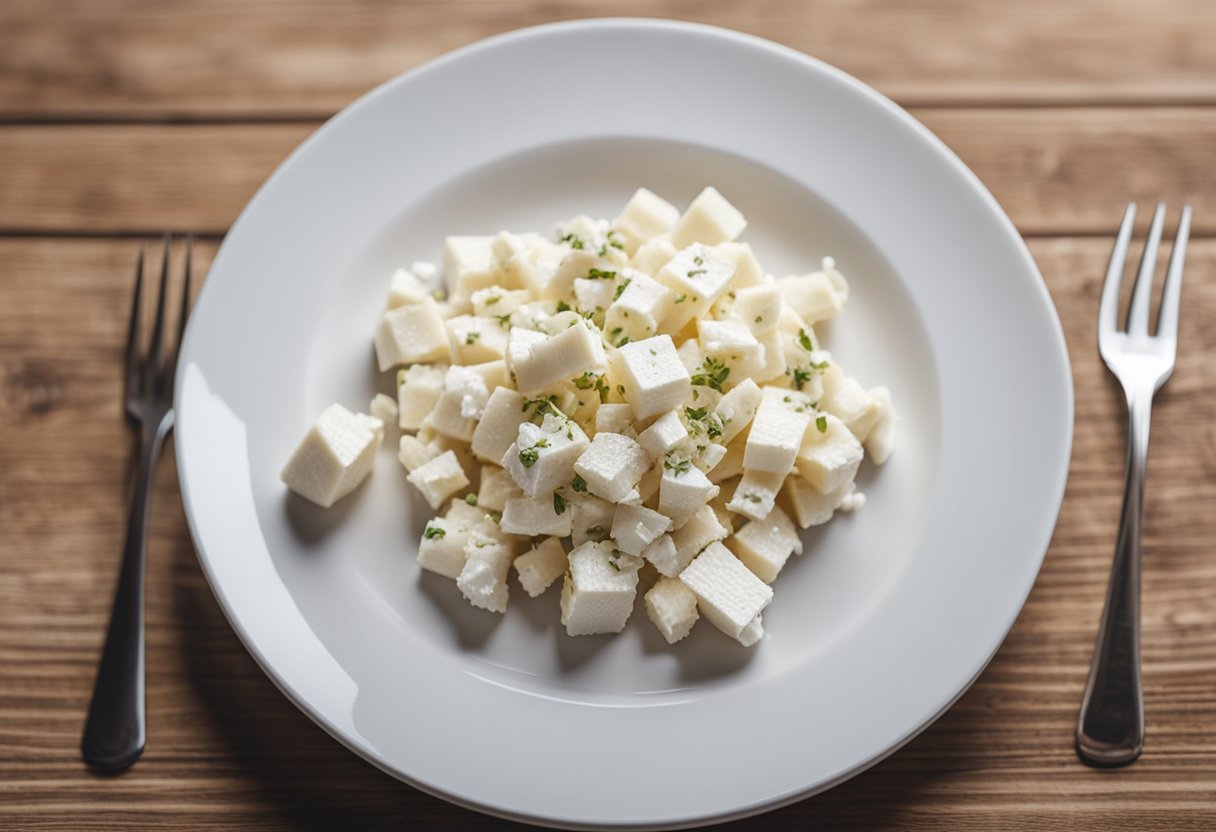
What are the flavor notes of feta cheese?
Feta cheese has a distinct tangy and salty taste. It has a crumbly texture and a creamy finish. The cheese also has a slightly sour and acidic taste, which is due to the brining process it undergoes.
Some varieties of feta cheese may have a hint of lemon in the aftertaste. French feta cheese, on the other hand, is milder and less salty than Greek feta.
How does the texture of feta cheese compare to other cheeses?
Compared to other cheeses, feta cheese has a crumbly texture that is similar to blue cheese or goat cheese. It is not as hard as cheddar or parmesan cheese but is firmer than cream cheese. The texture of feta cheese is ideal for crumbling over salads or soups.
What are the health benefits of feta cheese?
Feta cheese is a good source of calcium and phosphorus, which are essential for bone health. It is also rich in protein and vitamin B12.
Feta cheese is lower in calories and fat than many other cheeses, making it a good option for those watching their weight.
What are the differences between feta cheese and parmesan cheese?
Feta cheese and parmesan cheese are two completely different types of cheese. Feta cheese is a soft, crumbly cheese made from sheep’s milk or a blend of sheep’s and goat’s milk.
Parmesan cheese, on the other hand, is a hard, aged cheese made from cow’s milk. Parmesan cheese has a nutty, salty flavor and a hard, granular texture.
What are the differences between feta cheese and cream cheese?
Feta cheese and cream cheese are two very different types of cheese. Feta cheese is a crumbly and tangy cheese that is made from sheep’s milk or a blend of sheep’s and goat’s milk.
Cream cheese, on the other hand, is a soft, spreadable cheese that is made from cow’s milk. Cream cheese has a mild and creamy flavor and is often used as a spread for bagels or as a base for dips.
Is feta cheese similar in taste to mozzarella cheese?
Feta cheese and mozzarella cheese have very different flavors and textures. Feta cheese has a tangy and salty taste and a crumbly texture, while mozzarella cheese has a mild and creamy flavor and a stretchy, stringy texture.
Feta cheese is often used in salads and soups, while mozzarella cheese is more commonly used in Italian dishes like pizza and lasagna.





